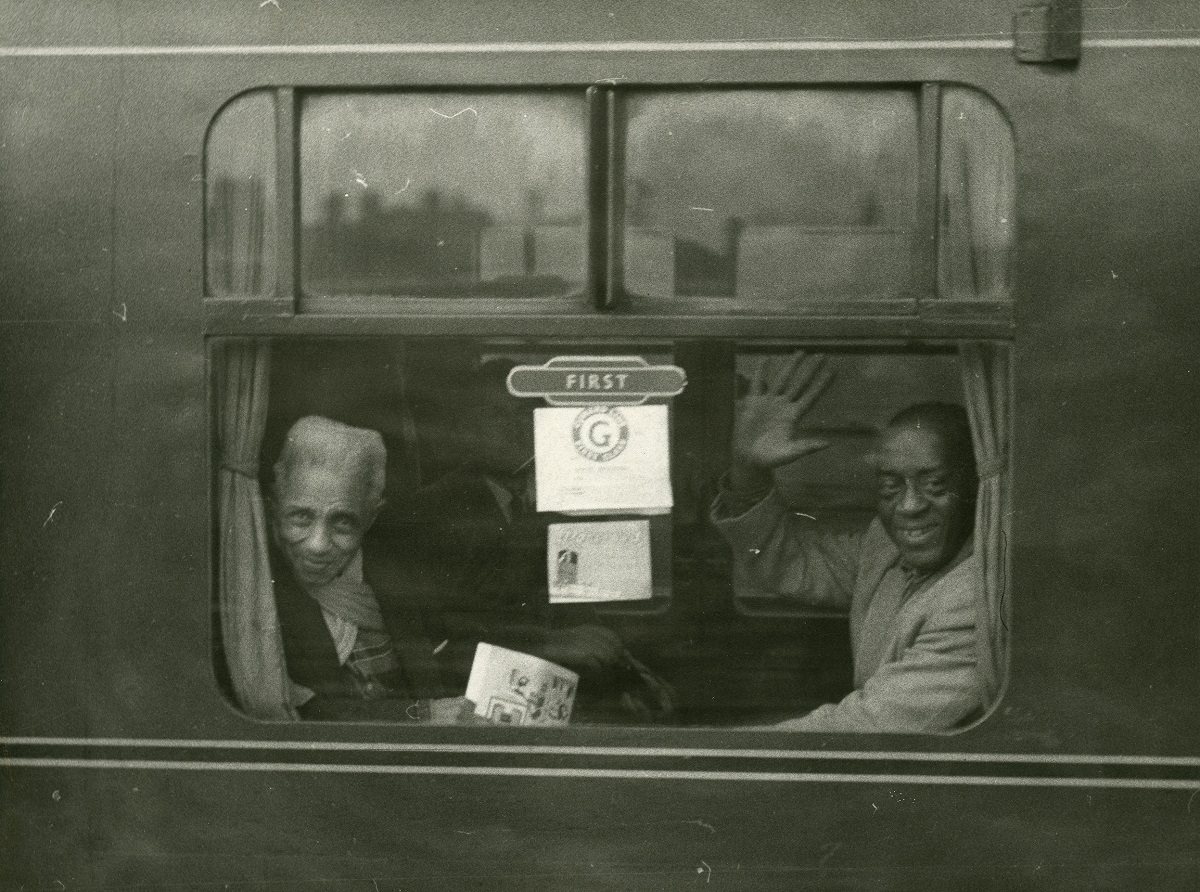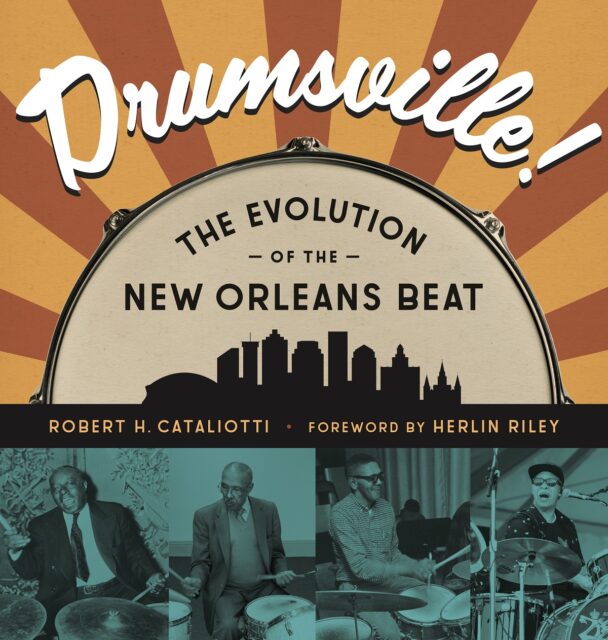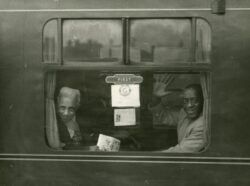The Reach of New Orleans Drumming: “He Taught Me a Lesson”
An Excerpt from Drumsville! by Robert H. Cataliotti
Published: August 31, 2022
Last Updated: November 29, 2022

Hogan Jazz Archive Photography Collection, Tulane University Special Collections
Joe Watkins (right) and Alcide “Slow Drag” Pavageau on a train to Liverpool, 1959.

LSU Press
“That guy” was Watkins, and Starr credits him with shaping his conception of a drum set. And, the drum set he would use when the Beatles appeared on The Ed Sullivan Show on February 9, 1964, probably inspired the purchase of more drum sets than any other single performance in history. Drummer Stanton Moore believes the image of Starr behind that drum set sparked widespread interest in drumming: “In the drummer world, the guys that are just a little older than me, guys that were born between 1955 and 1960, almost universally, those guys are like, ‘I saw Ringo Starr on Ed Sullivan, and that’s what I wanted to do.’” That was certainly the case with Ricky Sebastian, growing up in southwest Louisiana: “I mean I remember just being totally transfixed by the Beatles, like so many kids back then in the early 1960s watching. I think that probably got me interested in just watching drummers in bands that I’d see on TV.” The impact on a whole generation of fledgling drummers of Starr sitting atop a band riser playing his iconic Ludwig set with its drop-T Beatle logo on the bass drum head is powerful testimony to the reach of New Orleans drumming. A few years after the British tour, Watkins would travel to Japan as part of Lewis’s band, and his work as a drummer and vocalist—exemplifying what gave Starr that “Oh my God!” moment—is featured on the live albums George Lewis in Japan, Volume One and Volume Two. It is unlikely that when Watkins got back on the train in Liverpool he was aware of how far he had extended the reach of the New Orleans beat.
EXCERPT FROM:
Drumsville!: The Evolution of the New Orleans Beat
by Robert H. Cataliotti
Foreword by Herlin Riley
$39.95; 256 pp.
Louisiana State University Press
September 2022

